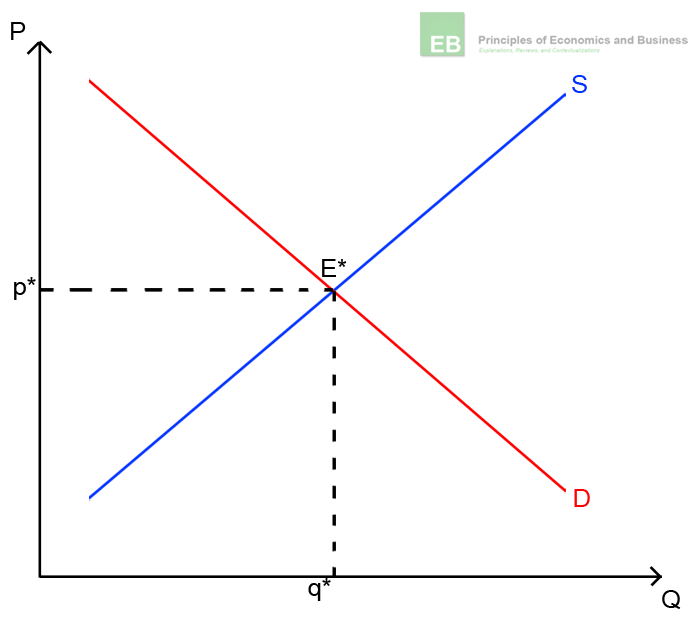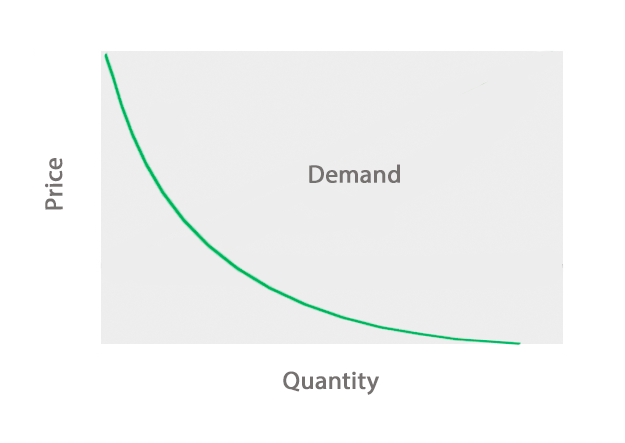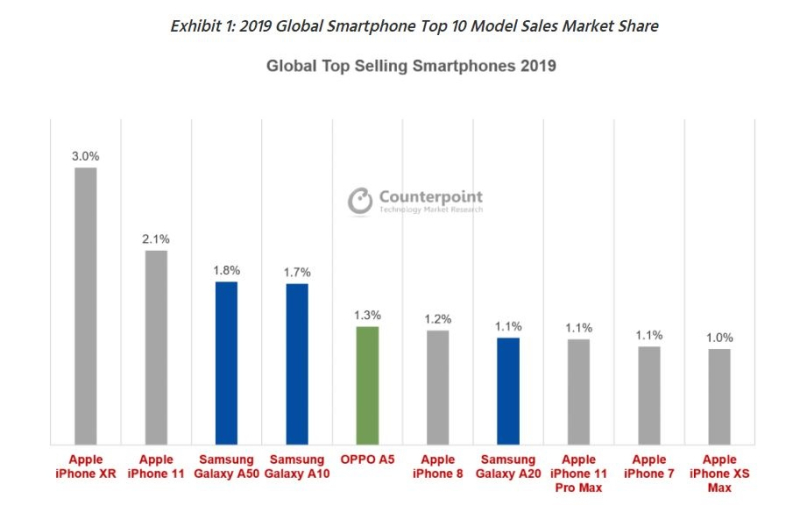Launching a new product is one of the most exciting yet daunting challenges an entrepreneur can face. The road to introducing something new to the market is filled with uncertainties, and navigating through these unknowns can often feel overwhelming. While the idea of a new product might seem innovative or exciting, there are numerous factors that could influence its success, and the primary one is demand.
Demand is the driving force behind any product’s success or failure. If the demand for your product is high, chances are your business will thrive. However, if the demand falls short or fluctuates unexpectedly, your business could suffer significant losses. As an entrepreneur, it’s critical to not only understand the market demand but also to predict how it might evolve. This is where market research and accurate demand forecasting become invaluable.
When planning to launch a new product, a solid understanding of your target market or niche is crucial. Without this knowledge, it’s difficult to determine if there is an existing need for the product or if your product can even meet that need effectively. Moreover, the supply chain plays a pivotal role. It is important to ensure you have the resources, production capabilities, and distribution channels in place to meet the expected demand. If the demand is underestimated and you can’t keep up with customer needs, you risk losing credibility and potential customers. On the other hand, overestimating demand might lead to excess inventory, tying up capital, and resulting in losses.
For instance, if you’re launching a new gadget, understanding the specific needs of your target audience—be it tech enthusiasts, professionals, or general consumers—helps you align your product with what they are looking for. Additionally, researching the competitive landscape is vital to assess if there are similar products already dominating the market. A thorough understanding of competitors can help you identify your unique value proposition and potential demand gaps that your product can fill.
One of the key aspects of successfully navigating this challenge is accurately calculating market demand. By determining the probable market size, customer willingness to pay, and overall purchasing behavior, you can adjust your strategy accordingly. If you know your product’s demand is strong, you might decide to invest heavily in marketing and scaling production. However, if the demand is uncertain or weak, you might need to test the waters through limited launches or pilot programs, adjusting your approach as you learn more about your customers’ preferences.
Ultimately, launching a new product is about balancing several factors—understanding demand, ensuring supply, monitoring competition, and continuously refining your approach based on feedback and data. In this article, we’ll explore the reasons why calculating market demand is essential for your business plan and how considering key details can significantly improve your chances of success.
The Importance of Market Demand
Understanding market demand is crucial for any business looking to launch or sustain a product in the market. It serves as a foundational element that can significantly influence the success or failure of a new product. Without accurately determining market demand, businesses can face challenges that range from overproduction and excessive inventory to underperformance and missed opportunities. Therefore, calculating market demand isn’t just a beneficial step in product planning—it’s a necessary one that shapes various aspects of your business strategy.
- Guiding Pricing Strategies
One of the most direct ways market demand influences your business is through pricing. Demand levels help you understand the price elasticity of your product—whether it’s inelastic (meaning demand doesn’t change much with price fluctuations) or elastic (where demand shifts significantly with price changes). Knowing this helps you optimize your pricing strategy.
- Shaping Marketing Initiatives
Marketing is another area where understanding market demand plays a critical role. By knowing how much demand there is for your product, you can better tailor your marketing campaigns to match consumer interest. If demand is strong, your marketing efforts can be geared toward highlighting your product’s uniqueness or its value proposition, emphasizing its superior features over competitors. Alternatively, if demand is lower, marketing strategies might focus on educating potential customers about why the product fulfills a need in the market, addressing pain points, or offering promotions to entice purchases.
- Optimizing Purchasing Decisions
Accurate market demand calculations also inform purchasing and inventory management decisions. By understanding how many people are likely to buy your product, you can predict how much inventory you need to keep in stock. This helps reduce the risk of both overstocking—leading to high storage costs or stockpiled unsold goods—and understocking, which can lead to lost sales and poor customer satisfaction.
- Assessing Competitor Impact
While your product’s demand is crucial, it’s equally important to consider the demand for similar products offered by competitors. Competitor analysis can provide valuable insights into whether the market is already saturated or if there’s room for innovation. If competitors are already dominating the market, understanding their pricing, positioning, and sales volumes can help you position your product in a way that highlights its unique features or better fulfills customer needs.
- Forecasting Future Growth
Beyond immediate product launches, understanding market demand is also key to predicting future growth. By analyzing trends and demand projections, businesses can plan for long-term scalability. If your market research suggests that demand for your product will increase in the future, you can begin preparing for larger production runs, broader distribution, or expanded marketing efforts. Conversely, if demand is expected to wane, businesses can pivot their strategies to maintain profitability, such as diversifying their product offerings or exploring new markets.
Ultimately, calculating market demand is not just about knowing how many people are willing to buy your product today; it’s about building a sustainable business strategy for the future. It enables you to make data-driven decisions in areas ranging from pricing and marketing to purchasing and competitive strategy. Therefore, market demand is not just a number—it’s a dynamic force that shapes the entire trajectory of your business.
How Market Demand Affects Pricing
Market demand plays a critical role in determining the pricing of a product or service. The relationship between market demand and pricing is dynamic, governed by a set of economic principles that explain how supply and demand interact. Understanding this connection is vital for businesses seeking to optimize their pricing strategy and adjust it to changing market conditions.
Fluctuations in Market Demand
Market demand is not static; it fluctuates due to various external and internal factors that directly affect pricing. These fluctuations can be driven by seasonality, shifts in consumer preferences, economic conditions, and even unforeseen events like natural disasters or geopolitical changes. For instance, if a product becomes highly popular and sees a surge in demand, businesses may take advantage of this increased interest by raising prices, knowing that consumers are willing to pay a premium for it.
On the other hand, when demand decreases—whether due to seasonal changes, economic downturns, or unexpected disruptions—businesses often lower their prices to stimulate sales and remain competitive. A classic example is how the price of winter clothing tends to drop at the end of the season or after a holiday sale period, as demand drops sharply once the season is over.
In extreme cases, such as during a natural disaster or a global pandemic, demand can change rapidly, and businesses must adapt their pricing strategies accordingly. For example, the price of face masks, hand sanitizers, and disinfectants surged during the COVID-19 pandemic due to sudden, widespread demand, while products like travel packages or hotel bookings saw significant drops in demand, leading to lower prices.
The Principle of Supply and Demand
The fluctuation in market demand directly adheres to the basic principle of supply and demand, a cornerstone of economics that governs how prices are set in the market. According to The Library of Economics and Liberty, “The law of supply states that the quantity of a good supplied (i.e., the amount owners or producers offer for sale) rises as the market price rises, and falls as the price falls. Conversely, the law of demand says that the quantity of a good demanded falls as the price rises, and vice versa.”

Source: https://quickonomics.com/the-law-of-supply-and-demand/
This fundamental relationship shows that prices are determined by both the willingness of producers to supply products and the willingness of consumers to buy. When the price of a product increases, suppliers are incentivized to produce and offer more of that product, as it becomes more profitable. However, the higher price discourages some consumers from purchasing, thus reducing the demand. Similarly, when prices fall, demand typically increases as more consumers find the product affordable, though suppliers may reduce production because of lower profit margins.
Market Research and Data Collection
To make accurate pricing decisions, businesses must rely on comprehensive market research. It’s crucial to consider a wide range of individuals and not just those who are most likely to purchase the product. While it may be tempting to focus on a core group of ideal customers, broadening the scope of your research can uncover untapped markets and potential customers who are willing to buy at various price points.
For instance, let’s say you’re selling a new line of vegan beauty products. While it’s clear that individuals who prioritize vegan products are most likely to buy from your brand, there may be a broader audience—people who are not necessarily vegan but are interested in cruelty-free or environmentally friendly products. These individuals might be willing to pay for your products at different price points, and their purchasing behavior could significantly affect the overall demand and the price you can charge.
The more data you collect from various customer segments, the more reliable your understanding of the overall demand will be. This approach helps avoid overestimating or underestimating your potential market, allowing you to price your products more effectively.
The Market Demand Curve and Pricing
The market demand curve is a graphical representation of the relationship between the price of a product and the quantity demanded by consumers. On this curve, the x-axis represents the quantity of the product being purchased at a given price, and the y-axis represents the price. As the price of a product increases, the quantity demanded typically decreases, which is reflected by the downward slope of the demand curve.
This curve is an essential tool for businesses, as it illustrates how changes in price can affect consumer behavior. By analyzing the demand curve, businesses can identify the optimal price point that maximizes sales while minimizing lost opportunities due to excessive pricing. The curve also helps predict how a price change, whether an increase or decrease, will impact the total demand for the product.
For example, if a business were to raise its product price, the demand might decrease at first, but this can sometimes be mitigated if the brand is strong or the product is perceived as having unique value. Conversely, lowering prices could drive more sales but potentially reduce profit margins.
According to myaccountingcourse.com, “The market demand curve is a graph that shows the quantity of goods that consumers are willing and able to purchase at certain prices.”

Source: https://www.myaccountingcourse.com/accounting-dictionary/market-demand-curve
Methods for Collecting Market Demand Information
Whether you want to calculate your market demand at a local or global level, it involves seeking information, data and studies about your sector. You might need different methods to collect the information, you can observe the market physically and even use newspapers, magazines, ecommerce stores and social media to determine what is trending and what your customers would buy in a given period of time. You could also try some experiments like selling a product at a discount price and see how your customers react, sending surveys by email or on social media is a great idea for products or services to share with customers and for them to forward it to their contacts, asking what they think of certain aspects of your products, some of this surveys would be helpful at a local scale.
When it comes to a local business willing to grow the target market, calculating the market demand globally through the previously mentioned methods represents an important step to understand customers, competitors and of course the demand. This would help them expand and grow on a global scale but are there easier ways to reach a wider audience? It is possible to sell our product out of our hometown? This is when technology plays its part in our business plan.
E-commerce and Market Demand
E-commerce, as its name implies, is all about electronic or internet commerce. It involves conducting business operations online and using the internet for transactions involving products or services. E-commerce has become one of the most widely adopted business models in recent years, driven by the increasing accessibility of the internet and advancements in digital technologies. The flexibility and reach of e-commerce enable businesses to tap into global markets, offer a wide range of products, and reach a diverse customer base.
There are a variety of platforms today that support e-commerce businesses, from online stores to websites that sell services. Platforms such as Shopify, Wix, eBay, and Weebly are some of the top choices for entrepreneurs looking to take their business online. These platforms offer essential tools for setting up, managing, and growing an online business, making it easier for entrepreneurs to build an e-commerce store, manage transactions, and market their products or services to a wider audience.

Source: https://www.dmipartners.com/blog/6-considerations-you-need-to-make-before-picking-an-ecommerce-platform/
E-commerce businesses can be classified into several models based on the interaction between businesses and consumers. Understanding these models is crucial for entrepreneurs as they decide which approach best suits their business goals. According to Shopify, the main e-commerce models include:
- Business to Consumer (B2C): This is the most common e-commerce model, where businesses sell products or services directly to consumers. Examples include online retailers like Amazon or clothing brands selling via their websites.
- Business to Business (B2B): In the B2B model, transactions occur between two businesses. Typically, this model involves bulk selling, where one business sells products to another business for resale or use in their operations. An example could be a wholesaler selling products to a retailer.
- Consumer to Consumer (C2C): This model allows consumers to sell products or services directly to other consumers, often through online platforms like eBay, Craigslist, or marketplace sections of social media sites.
- Consumer to Business (C2B): Here, individuals offer products or services to businesses. This model can be seen in freelance platforms where consumers provide services to companies, such as through Fiverr or Upwork.
Additional types of e-commerce models include Retail, Wholesale, Dropshipping, Crowdfunding, Subscription models, as well as sales of Physical products, Digital products, and Services.
Advantages of E-commerce for Entrepreneurs
E-commerce presents numerous advantages that make it an attractive option for entrepreneurs:
- Global Reach and Accessibility: One of the primary benefits of an e-commerce business is the ability to reach customers from all over the world. With an online store, you can sell products to anyone, anywhere, without the constraints of a physical location. This global reach opens up opportunities for businesses to expand their customer base far beyond their immediate geographical area.
- Cost Efficiency: Setting up an e-commerce business generally requires a lower initial investment compared to traditional brick-and-mortar stores. You do not need to worry about rent, utilities, or the high overhead costs associated with a physical store. A website serves as your storefront, and the operational costs are significantly lower.
- Convenience and Flexibility: E-commerce stores can operate 24/7, providing customers with the ability to browse and make purchases at any time. This constant availability can boost sales and customer satisfaction, as consumers can shop whenever it is most convenient for them.
- Reduced Operational Costs: With e-commerce, businesses can avoid the costs of managing a physical storefront, including staffing, maintenance, and the need for large physical spaces. Digital marketing campaigns and automated systems also reduce the time and effort required for operations.
- Easy Product Promotion: E-commerce platforms make it easier to showcase products and promote new arrivals. Online stores can quickly highlight best-sellers or seasonal products, and digital marketing strategies like email campaigns, social media promotions, and paid ads can drive traffic to these highlighted products.
- Efficient Inventory Management: With e-commerce, inventory management is streamlined and often integrated with the platform itself, providing real-time updates on product availability. Entrepreneurs can also track the performance of different products and adjust their offerings accordingly.
- Market Demand Stability: E-commerce businesses allow entrepreneurs to base their models on products or services with stable, year-round demand. For example, while seasonal products like winter clothing may experience fluctuations in demand, other goods such as health supplements, digital products, or consumer staples tend to have more consistent demand throughout the year.
The Role of Market Demand in E-commerce Success
While e-commerce offers various advantages, the stability and success of the business still depend on understanding and responding to market demand. While some products may have seasonal demand, others may be in demand consistently, regardless of the time of year. Entrepreneurs must carefully research their target market to ensure they are offering products that meet consumers’ needs and wants.
Access to valuable data has become more readily available through social media platforms, search engines, and customer feedback. Social media can be a powerful tool for tracking customer behavior, understanding trends, and even gauging the demand for certain products before launching them. E-commerce businesses can leverage this data to adjust their product offerings and marketing strategies to align with current consumer preferences.
Using Social Media and Search Engines for Market Research
In today’s digital age, one of the easiest and fastest ways to connect with your customers and gain insights into their preferences is through social media and search engines. These platforms offer a wealth of information that can help businesses understand their audience and assess market demand. Social media applications like Twitter, Pinterest, Facebook, and Instagram allow users to share information, thoughts, and experiences about products and services, creating valuable data for businesses.
By using social media, you can enter relevant keywords to find posts related to those terms. This enables you to tap into conversations and discussions that reveal customer expectations, opinions, and feelings about specific trends, products, or services. By searching for case studies, industry reports, and product sales information through traditional search engines like Google, you can gain insights into the demand for particular products during specific periods. In addition to this, understanding competitors’ pricing strategies and offerings can help refine your market positioning.
For example, a market research article from Patently Apple discussed the top two smartphones globally in 2019, the iPhone XR and iPhone 11, and how such information from industry reports can influence market demand understanding. By examining popular products and their trends, businesses can better estimate demand for similar or related items, ensuring their product offerings align with market preferences.

Source: https://www.patentlyapple.com/patently-apple/2020/02/the-top-two-smartphones-globally-in-2019-were-the-iphone-xr-and-iphone-11.html
Using Search Engine Optimization (SEO) Tools for Market Research
Beyond social media, search engine optimization (SEO) tools can also play a critical role in market research by providing data on search trends and keyword popularity. According to Google’s SEO Starter Guide, SEO is the process of optimizing your website to improve its visibility on search engines and is often performed by specialized professionals. However, even entrepreneurs can use SEO tools to gain valuable insights into what potential customers are searching for online.
- Keyword Surfer is a free Google Chrome extension that provides useful data from search engine results pages (SERPs). It displays search volume, keyword suggestions, and estimated organic traffic for each page ranking for a particular keyword. This tool can help identify what keywords are driving traffic in your niche and what your potential customers are searching for.
- Google Trends is another powerful tool that allows you to explore frequently searched keywords related to your industry. You can search for terms and observe how their popularity fluctuates over time. This is especially useful for tracking local trends and understanding seasonal demand.
- Google Keyword Planner is an essential tool for researching keywords and determining their search frequency over a monthly term. To use this tool, you’ll need a Google Ads account. Google Keyword Planner allows you to tailor your search by location, which is beneficial if you want to target specific countries or regions. It also helps you understand search volume and trends for specific keywords.
Source: https://www.seo.com/blog/seo-trends-to-look-for-in-2018/
Whether you plan to launch a physical or online business, market research is crucial for success. In the past, traditional methods such as surveys, focus groups, and direct observations were used to understand customers. However, the rise of social media and search engines has revolutionized how businesses can gather data. These platforms offer real-time feedback, user-generated content, and vast amounts of information that provide deeper insights into market demand.
Conclusion:
In conclusion, calculating market demand is a crucial aspect of launching a new product, as it helps entrepreneurs understand the potential success or failure of their business plans. By analyzing factors such as customer preferences, pricing, and competition, entrepreneurs can make informed decisions on pricing strategies, marketing initiatives, and supply management. With the right market demand research, businesses can anticipate fluctuations and align their offerings to meet customer needs effectively.
Today, leveraging modern tools such as social media, search engines, and e-commerce platforms can provide valuable insights and facilitate reaching a broader audience globally. Whether launching locally or aiming for international expansion, having a solid understanding of market demand enables businesses to optimize their operations, avoid costly mistakes, and grow sustainably.
As you reflect on this, consider how the knowledge of market demand can influence your own business strategies and help you better understand your target market. What adjustments could you make to ensure that your product will meet customer expectations and achieve success?
Additional Resources:
- ConveyThis Integrations – To explore compatibility with WordPress.
- How to Translate WordPress – For more guidance.
- Help Guide for Translating WordPress Websites – For step-by-step support.







